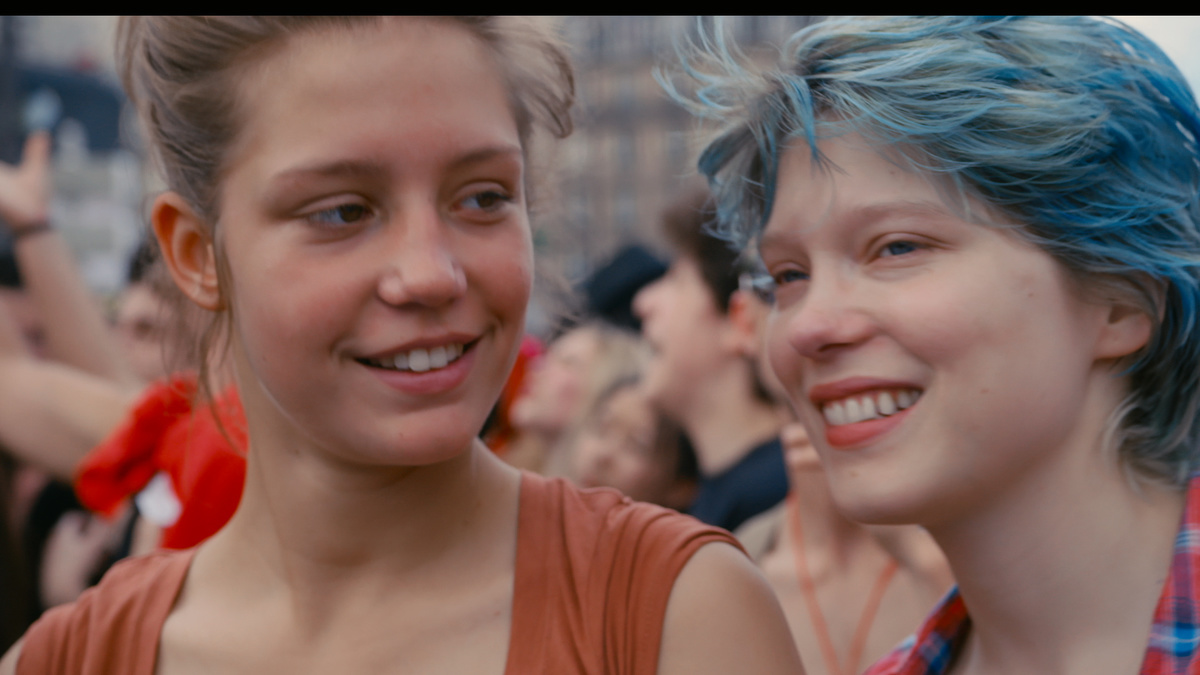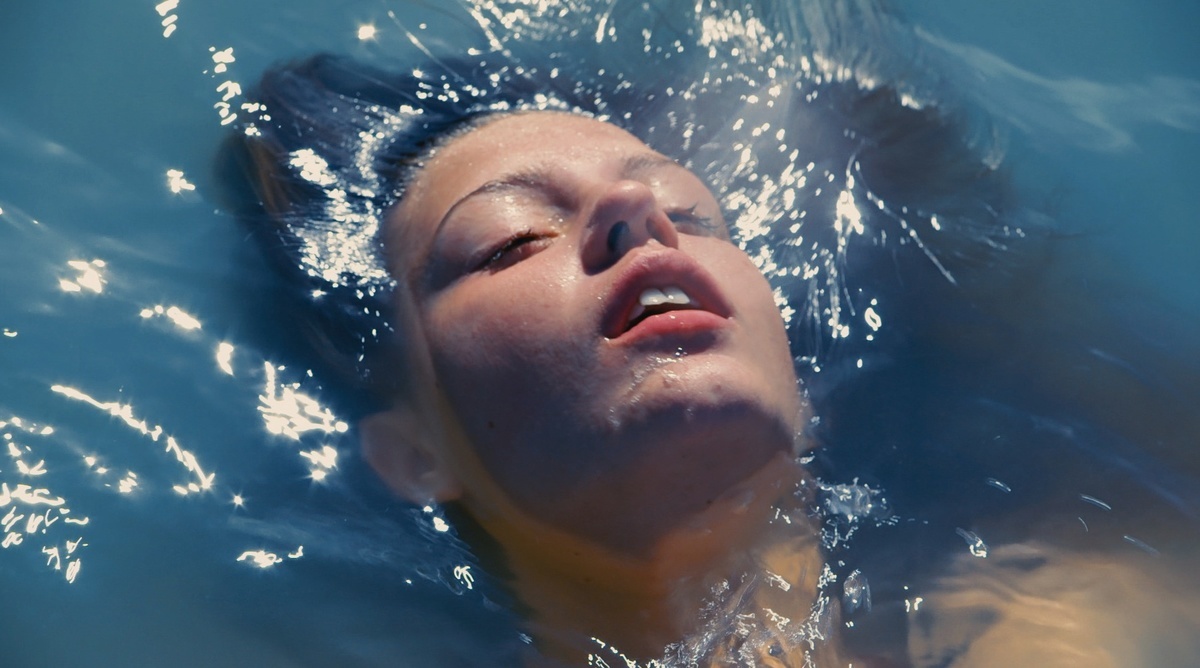“The story of absolute love between two women,” is how Abdellatif Kechiche describes Blue Is The Warmest Colour, for which he shared the Palme d’Or with actresses Léa Seydoux and Adèle Exarchopoulos at the Cannes Film Festival this year, the news breaking alongside footage of gay marriage opponents rioting on the streets of Paris.
But if this is a gay film, it’s also one capable of exposing how meaningless such terms are. “It’s a film about breaking up, the emptiness you can feel, the loneliness you experience when you’re no longer loved, the bereavement you go through – everyone has known this,” Kechiche says. “Everyone feels it, and no one can explain the pain it can create, but what interests me is that, despite the pain, life goes on. What must be accomplished doesn’t go away.”
Such a passionate film came from leftfield. Kechiche is a 52-year-old French director of Tunisian descent who, before this film, was best known for a film called – and mostly about – Couscous. Asked about his own heritage, Kechiche acknowledges large swathes of the Arabic world still cannot accept the idea of gay lovers: “Once the film was completed I thought: ‘This is going to do Tunisian youth some good,'” he says. “A revolution isn’t complete unless it’s also a sexual revolution.”
It’s a film about breaking up, the emptiness you can feel, the loneliness you experience when you’re no longer loved, the bereavement you go through – everyone has known this. -Abdellatif Keniche

Exarchopoulos was 19 years old when she filmed Blue is the Warmest Colour. An actress of Greek descent, she plays a smart secondary school student, part of a gaggle of girls who like boys who like girls who like boys. She explores her body at night wrapped in blue bed sheets, and then accepts the attention that inevitably comes her way. But when she loses her virginity, it’s awkward and self-conscious. She breaks up with the boy, sat on a blue bench.
“It was a beautiful role to play,” Exarchopoulos says. “A difficult part, with ups and downs, but I was able to discover her over time. I made very close friends for life with Léa, and that was good for us.” Léa Seydoux plays Emma, a cool artist in her twenties. Adèle first sees her strolling across a busy road, her arm thrown loosely over another girl’s shoulder but meeting Adèle’s eyes with a sphinx-like smile. Unlike Adèle, who seems almost shocked by her desire, Emma barely gives anything away. Everything about her is reserved and poised, apart from a shock of electric blue hair. When they first meet, she considers what Adèle has to say with a faint smile and even, unmoving blue eyes.
Such a contrast came from an exacting casting process that took almost two years for Kechiche. He found Léa first: “She shared her character’s beauty, voice, intelligence and freedom,” he says. “But what was decisive during our meeting was her take on society: she’s very much tuned into the world around her. She possesses a real social awareness, she has a real engagement with the world,” he says. “Léa has a way of going through life fully aware of what’s happening. It’s also a way of accepting life’s vicissitudes. It has something to do with nomadism, wandering, and with melancholy. Léa is tinged with all this, with this way of going through the world.” Léa is acting royalty in France – the granddaughter of the man who founded Pathé, the face of Prada, who has weaved the cerebral cinema of her homeland with parts in Bard Bird’s Mission: Impossible, Ridley Scott’s Robin Hood and Woody Allen’s Midnight in Paris.

But although Adèle Exarchopoulos got an agent at 13, and had ten acting credits at the age of 19, she is – or at least was – an unheard of, with no profile at all beyond France’s cine-circles. She certainly wasn’t on Kechiche’s radar. He invited hopefuls for an open casting day and picked her out of a crowd, taking her to a local Brasserie for a closer look. She ordered a lemon tart, and he watched her eat it. “When I saw the way she ate it, I knew she was right. Her mouth was a very important element in this film – in fact, both characters’ mouths were decisive, and for very human reasons. They provoke all sorts of feelings and sensations. Something in a face touches us: a nose, a mouth. For me this is the beginning of everything.”
It was a beautiful role to play. A difficult part, with ups and downs, but I was able to discover her over time. I made very close friends for life with Léa, and that was good for us. -Adèle Exarchopoulos
It’s an interesting comment; Kechiche uses Adele’s love of food as a way of foregrounding her sexual appetite. She hides sweets under her bed and, when her parents serve pasta, she eats without drawing breath. Blue – as I’m sure you already know – is made unique by its quartet of unvarnished, intensely emotional sex scenes, one of which lasts for 12 minutes (and took ten days to shoot). Filmed with hyper-realisitc close-ups, Adèle’s desire for grub is matched by her desire for sex.

But there’s an elephant in the article, because Kechiche has been accused – probably justifiably – of a controlling invasiveness, of misogyny towards his actresses, of making a film that is as much about his own desires as it is a response to the demands of the story. Seydoux and Exarchopoulos described the shoot as “horrible,” of feeling “like prostitutes,” vowing never to work for him again. He responded in turn.
As Julie Maroh, who authored the graphic novel on which the film is based, wrote: “Except for a few passages — this is all that it brings to my mind: a brutal and surgical display, exuberant and cold, of so-called lesbian sex, which turned into porn, and made me feel very ill at ease.” It’s a complex point. Should Kechiche’s attitude in production detract from the film he has produced? Tippi Hedren labeled Alfred Hitchcock a sexual predator, but together they still made The Birds. Howard Hawks’ treatment of Lauren Bacall was motivated by sexual jealousy, a need for possession, yet together they made The Big Sleep.
Exarchopoulos, for her part, is reluctant to dwell on the controversy. “It’s frustrating that everyone wants to talk about, to ask whether we are friends. I don’t regret saying what I said, and I stand by it. It was a complex experience, but only we know what it was like. Kechiche is a genius, and he placed his faith in me. He has a lot of humanity, and we are very close.”

Asked about his creation of the sex scenes, Kechiche says: “Telling a love story between two women means to work with two actresses to the fullest. I was trying to film what I found beautiful. So we shot them like paintings, like sculptures. We spent a lot of time lighting them to ensure they would look beautiful; after, the innate choreography of the loving bodies took care of the rest, very naturally. They had to be made aesthetically beautiful while keeping the sexual dimension. We tried many different things; we worked hard. We talked a lot but in the end discussions led nowhere. You talk a lot on set but ultimately what you say doesn’t matter that much because it’s so intellectualised, whereas reality is more intuitive.”
Pressed again, Exarchopoulos says: “Abdellatif asked us to give him everything and we did. He asked us to trust him. Yes, it was very hard. But it was passionate. He makes cinema I love.”
Credits
Text Tom Seymour
Film stills courtesy of Curzon Cinemas
Celebrate London Pride with i-D this Saturday!
